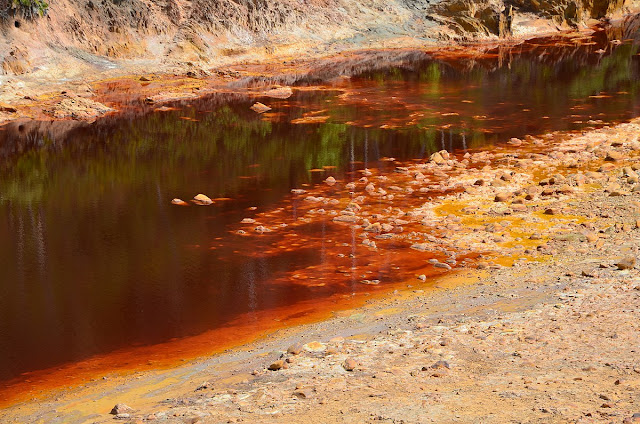Similar to Planet Mars, the Rio Tinto River in Spain Becomes a 'Natural Laboratory'
The Rio Tinto River is located in the city of Minas de Ríotinto, Spain, known for its rusty red and orange shades. You can also see blue and purple shades here.
Despite its beauty, Rio Tinto is not a place for swimming, as the river's water is filled with heavy metals and is highly acidic, with a pH level of between 1.7 and 2.5. However, this location has become a favorite tourist spot for photographers from all over the world.
Rio Tinto, renowned as a multinational mining company, operates all over the world. Rio Tinto is the name of a river, which means "red river" in Spanish.
Flowing from the mountain springs of the Sierra de Huelva, Andalusia, the Rio Tinto River passes through the southwestern part of Spain. For about 5,000 years, rivers rich in copper, gold, silver, and other minerals have been continuously mined. The iron solution contained in the rocks and sand dissolves and creates a strange sight.
Rio Tinto is considered the birthplace of the Copper Age and Bronze Age. In 3,000 BC, the Berians and Tartessians of the area began to mine the river. This was followed by the Phoenicians, Greeks, Romans, Visigoths, and Moors. For hundreds of years, the river mines were abandoned, until they were rediscovered and put into operation by the Spanish government in 1724.
After massive excavations by British companies in the 19th century, the river was extremely dangerous, due to its high acidity. Then the multinational mining company Rio Tinto was created to manage the mine.
Due to mining activity, the copper solution creates a red hue like Mars.
Actually, red isn't the only color seen there. Minerals that precipitate and are contained in it give rise to yellow, orange, to golden colors.
Due to large-scale mining activities, residents are threatened with dangerous risks, unless they want to move places.
The mining area is vast. Not only rivers, but up to the valleys and mountains where the people live.
Clean water, which is the source of people's livelihoods, is polluted by heavy metals. That's why Rio Tinto's mining areas are no longer suitable for living
Rio Tinto no longer manages the mines along the river. Rio Tinto became one of the world's largest mining companies, at the end of the 20th century,
But nature shows its magic. From the very acidic river, live bacteria that feed on iron and sulfide minerals under the rocks. These bacteria make the quality of the water in Rio Tinto improve from year to year, and make it continue to flow to the estuary in the Cadiz Bay, Huelva, Spain.
Rio Tinto is one of the most popular tourist destinations in Spain, especially for those who visit Andalusia. This unique sight sends tourists flying deep into the imaginary realms like the watery Planet Mars.


No comments:
Post a Comment